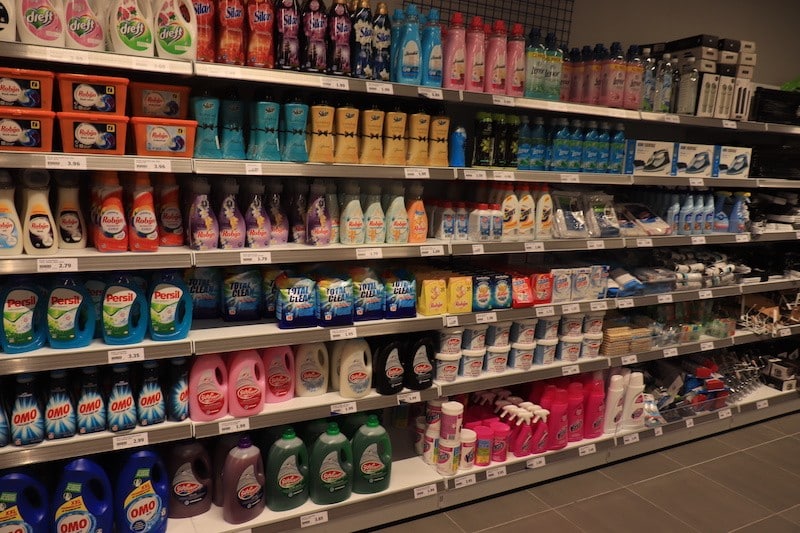The Future of Consumer Packaged Goods in 2022
Much has been said of consumer packaged goods in 2020 and 2021. From the raids on store shelves for toilet paper to the rationing of hand sanitizer, rarely have we seen such unpredictable, and yet repeatable, challenges to the supply chain of consumer packaged goods.
At the time of publication, we are not yet through 2021, yet we already know a few things about next year:
– Supply chain issues continue to challenge our infrastructure
– Labor shortages will continue to disrupt aspects of our supply chain
– Demand for CPG will be difficult to predict.
Let’s take a few minutes to dig into these aspects of our business and discuss what the future holds for consumer packaged goods, at least in the near future.
Supply Chain Bottlenecks will Continue into 2022
Overseas transport of goods is and will remain bottlenecked. The port of Los Angeles accounts for 40% of all shipping containers entering the US. As of early October, more than half of the ships at that port have not even been able to berth. Recent efforts to move operations to 24/7 may help alleviate the backlog, but it will take time. Even so, these efforts will do nothing to eliminate bottlenecks in the trucking, rail, and last-mile infrastructure. As a result of this compounding effect, supply chain challenges for consumer packaged goods will remain with us at least through 2022, likely into 2023.
Demand for warehousing continues to rise as distributors seek to ensure adequate supply entering the end of the year. Consumer packaged goods are increasingly competing for space with holiday retail items as distributors and retailers seek to ensure a profitable holiday season. Both by stocking up on items to ensure product availability and beginning holiday sales early – in some cases beginning Black Friday sales as early as October – affordable warehousing capacity is increasingly scarce.
The Labor Shortage will Continue to be a Challenge
Adding to these structural challenges is a labor shortfall impacting all aspects of the supply chain. Recently released data shows that 77% of manufacturers experiencing difficulties attracting and retaining skilled workers. Meanwhile, the warehousing and transportation industry hit record highs in July of this year.
Overall, “year-over-year, wages rose 4.6% in September, up from a 4.0% gain in August and a seven-month high.” This is likely higher in the supply chain, and these costs, once increased, tend to remain a the increased level. The high increases month-over-month have continued to the point that the increased costs can no longer be absorbed and inflationary pressures are beginning to show in the market.
Consumer Demand will Remain Volatile
As we discovered in 2020 – and a bit in 2021 – consumer demand for products can be unpredictable. Whether influenced by news, social media, or just fear, runs on consumer packaged goods like toilet paper, cleaning products, sanitizer, and more can accelerate with little to no notice. This accelerated demand far outpaces the rate at which production can be increased, much less the lead time required to move product and replenish shelves.
This volatility will require manufacturers and distributors to maintain higher stock levels or risk losing market share to competitors. Much criticism can be given for the behavior of toilet paper hoarders in 2021. Yet one cannot deny that 1) they spent money on products and 2) they did not return to replenish their supply for quite some time. The ability to meet demand, no matter how finicky and unpredictable, is critical to cultivating market share.
Conclusion
2022 will certainly start off the way 2021 has gone for consumer packaged goods. Increased costs in the supply chain from manufacturing to distribution will likely lead to inflationary prices, at least for the short term, with labor and logistics challenges adding to volatile consumer demand and increased competition for warehousing space.
How Can we Help?
At PRISM Logistics, we work to support our clients by utilizing state-of-the-art technology to provide our clients with 24/7, real-time views of their product inventory. Clients are able to incorporate this data into their other information to ensure optimum supply levels are maintained and they can navigate this challenging environment. As a family business, we have been working in Food and Consumer Packaged goods since our founding and we pride ourselves in our ability to help our clients find an optimal solution to their distribution needs in Northern California. Let us know how we can help you. Fill out our rate request form today.



